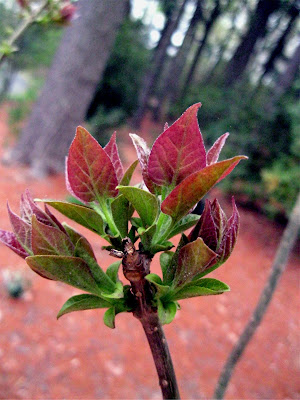Went to Jim and Dan's today to help out with Jim's garden tours. He invited the Master Gardeners of Frederick County, Montgomery County, and a garden club, Takoma Park to an open garden day. The garden never ceases to amaze me. I've been there dozens of times and every time I find something incredible I've missed before. Almost every time I go Jim has finished some huge project. Half the beds in the bottom picture, the redder bricks, and the pergola have all appeared in the last 7?!? months. Roses are already on the pillars and the flagstone and bricks are waiting to complete the paving.
Many of us have admired the Staphylea in the top picture over the years without really identifying it. Jim believes it's one of the hybrids developed in the last quarter of the 19th century. Whatever it is, it's a spectacular plant flowering more heavily than any I have ever seen. And it's fragrant. Jim brought down a sucker last year to the Arboretum and I transferred it to Richard Olsen, but somehow, it didn't survive. Later this spring or early this summer, I swear I'll get back, take some cuttings and we will grow this plant!









 f
f





